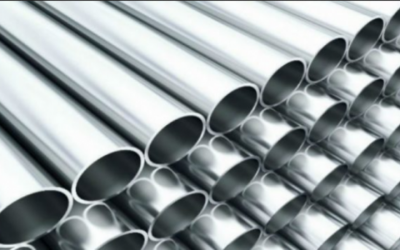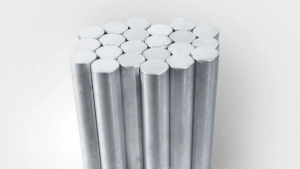Wrought aluminum alloys are used as metals in the aviation industry that can be shaped through rolling, drawing, or forging processes. In particular, wrought aluminum alloy is used more commonly in the construction of aircraft grade aluminum than is cast aluminum. These alloys can be manufactured into particular aerospace components such as extrusions, stringers, skin, bulkheads, and rivets.
Heat and Non-Heat Treatable Aluminum Alloys
The two major classifications of wrought aluminum alloy are heat treatable and non-heat treatable. Non-heat treatable wrought aluminum alloy has mechanical properties that rely on the level of cold working introduced into the metal after the final annealing work has been completed. These properties can be removed when heating is performed on the metal subsequently and may only be restored by performing additional cold working, which incidentally, may not be possible in all cases. Through maximum cold working, a desired temper may be achieved.
Heat treatable alloys on the other hand possess mechanical characteristics that are obtained by the means of heat treating at the proper temperature. This is achieved when the temperature is maintained for a sufficient period of time that allows the constituent alloy to develop into a solid solution. The alloy is then quenched to retain its characteristics. This process puts the metal in a supersaturated, unstable condition. It is subsequently age hardened at either an elevated “artificial aging” temperature or at a “natural aging,” room temperature.
Wrought Aluminum Alloy
Wrought aluminum alloys possess four digit designations that include three separate groups. The first group includes those with a number “1” as the first digit. The second grouping has the numbers “2” up to “8” as the first digit. The third grouping has “9” as the first digit. The last group is not currently in use. Therefore, we will review the first two groups below.
First Grouping
The first digits designate the alloy’s type of metal. The second digit specifies a particular modification to the alloy. For instance, a zero for the second digit indicates no special controls were applied to the alloy’s individual impurities. If the second digit includes any number from 1 to 9, it indicates the number of controls affecting the individual impurities of the alloy.
The last two digits of the first group indicate the one hundredths of one percent above the alloy’s original 99% as designated by its first digit. As an example, if the final two numbers are 50, the alloy contains 99% +0.50% pure aluminum. This would refer to 99.50% pure aluminum.
For instance, if the purity of aluminum is 99.50% and two controls are placed on the individual impurities, the number designation for the alloy would be 1250.
Second Grouping
With the second grouping of aluminum alloys with digits 2 to 8 as the first digit designation, these assigned digits designate the alloying element used in forming the alloy:
• 2 – copper
• 3 – manganese
• 4 – silicon
• 5 – magnesium
• 6 – magnesium and silicon
• 7 – zinc
• 8 – othersWhat is Wrought Aluminum Alloy?
• Wrought aluminum alloys are used as metals in the aviation industry that can be shaped through rolling, drawing, or forging processes. In particular, wrought aluminum alloy is used more commonly in the construction of a
In this grouping, the second digit reveals the modifications to the alloy. No modification to the alloy is designated by a zero designation. Designations 1 to 9 reveal the modifications to the alloy. The last two digits in the four digit label indicate the different alloys of the group.


